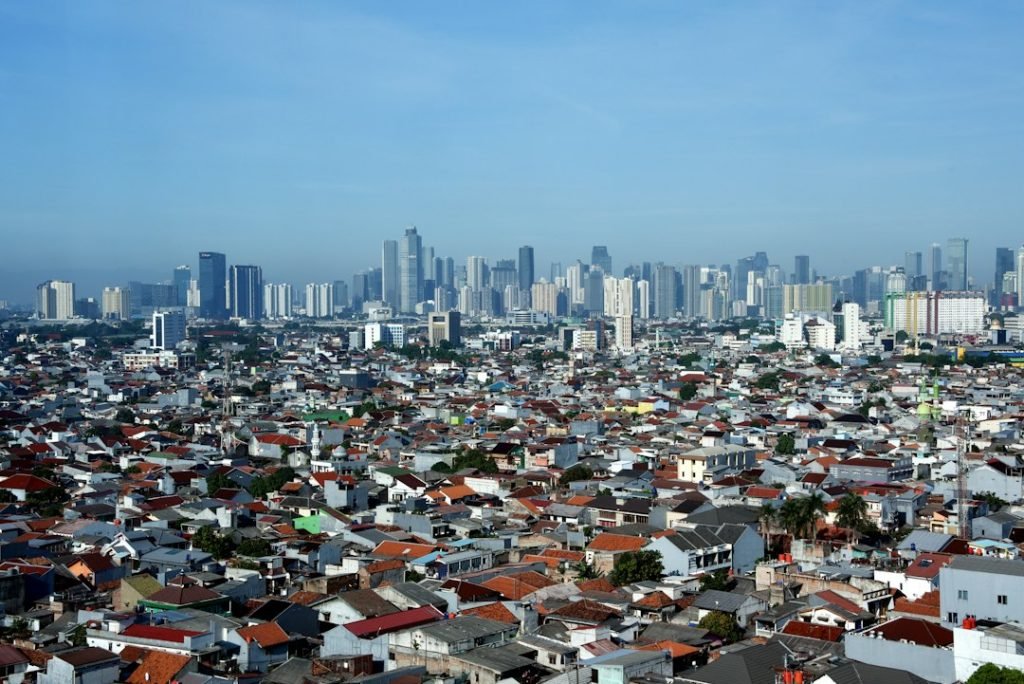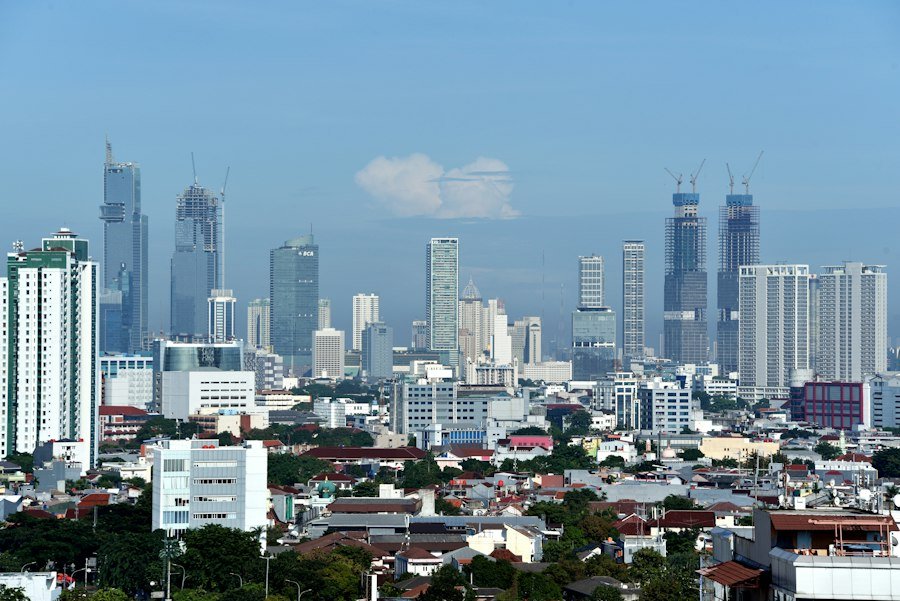

Norwegian Vocabulary for Urban Exploration: City Life and Culture
Urban exploration, also known as urbex, is the act of exploring abandoned or off-limits urban areas. It has gained popularity in recent years as people seek to uncover the hidden history and beauty of forgotten places. Norway, with its rich history and stunning landscapes, is a perfect destination for urban exploration.
Norway is known for its picturesque fjords, charming towns, and vibrant cities. But beyond the tourist attractions lies a world of hidden gems waiting to be discovered. From abandoned factories and hospitals to forgotten tunnels and underground bunkers, Norway offers a wide range of urban exploration opportunities.
One of the reasons why Norway is a great destination for urban exploration is its abundance of abandoned buildings and structures. The country has a long history of industry and development, which has left behind a wealth of abandoned sites. These sites not only provide a glimpse into Norway’s past but also offer unique opportunities for photographers and adventurers.
In addition to its abundance of abandoned sites, Norway also boasts stunning natural landscapes that make for breathtaking exploration. From the rugged mountains of the north to the serene forests of the south, Norway’s natural beauty adds an extra layer of excitement to urban exploration. Whether you’re exploring an abandoned building in Oslo or hiking through an overgrown trail in Bergen, you’re sure to be surrounded by awe-inspiring scenery.
Table of Contents
ToggleBasic Norwegian Vocabulary for City Life
If you’re planning on exploring Norwegian cities, it’s helpful to have some basic Norwegian vocabulary under your belt. While many Norwegians speak English, knowing a few key words and phrases can go a long way in navigating the city and interacting with locals.
Here are some common Norwegian words and phrases for city life:
– Hei (hi) – Hello
– Takk (tahk) – Thank you
– Unnskyld (oon-skool) – Excuse me
– Ja (yah) – Yes
– Nei (nay) – No
– Vennligst (ven-ligst) – Please
– Hvor er…? (vor air) – Where is…?
– Toalett (toh-ah-let) – Toilet
– Mat (maht) – Food
– Drikke (drik-keh) – Drink
When asking for directions, you can use the following expressions:
– Hvor er…? (vor air) – Where is…?
– Går det…? (gohr deht) – Does it go to…?
– Hvordan kommer jeg til…? (vohr-dahn kohm-mehr yai teel) – How do I get to…?
– Kan du hjelpe meg? (kahn doo yel-peh may) – Can you help me?
When ordering food, you can use the following expressions:
– Jeg vil gjerne ha… (yai vil yern-eh hah) – I would like…
– Kan jeg få…? (kahn yai foh) – Can I have…?
– En kopp kaffe, takk. (en kohp kah-feh, tahk) – A cup of coffee, please.
– En øl, takk. (en uhl, tahk) – A beer, please.
Navigating Public Transportation in Norwegian Cities
Public transportation is a convenient and efficient way to get around Norwegian cities. Whether you’re exploring Oslo, Bergen, or Trondheim, there are several options available for getting from point A to point B.
Buses are the most common form of public transportation in Norwegian cities. They operate on a regular schedule and cover a wide area, making them a convenient option for getting around. Most buses have electronic displays that show the next stop, making it easy to keep track of where you are.
Trams are another popular mode of transportation in Norwegian cities. They are especially common in Oslo and Bergen, where they provide a quick and efficient way to navigate the city. Trams have designated stops along their route, and tickets can be purchased onboard or at ticket machines located at the stops.
Trains are a great option for traveling between cities in Norway. The country has an extensive railway network that connects major cities and towns. Trains are known for their comfort and scenic views, making them a popular choice for both locals and tourists.
When using public transportation in Norwegian cities, it’s important to have a valid ticket. Tickets can be purchased at ticket machines located at bus stops, tram stops, and train stations. Some cities also offer mobile ticketing options, allowing you to purchase tickets using your smartphone.
Understanding Norwegian Street Signs and Directions
Navigating the streets of Norwegian cities can be a bit challenging if you’re not familiar with the language. However, with a basic understanding of Norwegian street signs and directions, you’ll be able to find your way around with ease.
Norwegian street signs are typically written in both Norwegian and English, making them easy to understand for English speakers. However, it’s still helpful to know some common Norwegian words and symbols that you may encounter on street signs.
Here are some common Norwegian street signs and symbols:
– Stengt (stengt) – Closed
– Innkjøring forbudt (inn-kjoh-ring for-boodt) – No entry
– Utgang (oot-gahng) – Exit
– Parkering forbudt (par-keh-ring for-boodt) – No parking
– Enveiskjøring (en-vey-skjoh-ring) – One-way street
– Gangvei (gahng-vey) – Pedestrian walkway
– Trafikklys (traf-ik-lys) – Traffic lights
– Rundkjøring (roond-kjoh-ring) – Roundabout
– P-hus (p-hoos) – Parking garage
When asking for directions, it’s helpful to know some common Norwegian words and phrases:
– Høyre (hoy-reh) – Right
– Venstre (ven-streh) – Left
– Rett fram (ret fram) – Straight ahead
– Til høyre (teel hoy-reh) – To the right
– Til venstre (teel ven-streh) – To the left
– Gå rett fram (goh ret fram) – Go straight ahead
Ordering Food and Drinks in Norwegian Restaurants and Cafes
Norwegian cuisine is known for its simplicity and use of fresh, local ingredients. From traditional dishes like lutefisk and rakfisk to modern interpretations of Nordic cuisine, there’s something for everyone to enjoy.
When dining out in Norwegian restaurants and cafes, it’s helpful to know some basic Norwegian words and phrases for ordering food and drinks.
Here are some common Norwegian dishes and drinks to try:
– Lutefisk – Dried fish soaked in lye and then boiled or baked
– Rakfisk – Fermented fish typically served with flatbread and sour cream
– Fårikål – Lamb stew made with cabbage, potatoes, and peppercorns
– Krumkake – A thin, crispy waffle-like cookie often filled with whipped cream or jam
– Aquavit – A traditional Scandinavian spirit flavored with herbs and spices
– Kvikk Lunsj – A popular Norwegian chocolate bar often eaten as a snack during outdoor activities
When ordering food and drinks in Norwegian restaurants and cafes, you can use the following expressions:
– Jeg vil gjerne ha… (yai vil yern-eh hah) – I would like…
– Kan jeg få…? (kahn yai foh) – Can I have…?
– En kopp kaffe, takk. (en kohp kah-feh, tahk) – A cup of coffee, please.
– En øl, takk. (en uhl, tahk) – A beer, please.
– Hva anbefaler du? (vah ahn-beh-fah-lehr doo) – What do you recommend?
– Har dere vegetariske alternativer? (har deh-reh veh-geh-tahr-is-keh ahl-tehr-nah-teev-ehr) – Do you have vegetarian options?
Exploring Norwegian Museums and Galleries

Norway has a rich cultural heritage, and exploring its museums and galleries is a great way to learn more about the country’s history and art. From ancient Viking artifacts to contemporary works by Norwegian artists, there’s something for everyone to enjoy.
Here are some popular museums and galleries to visit in Norwegian cities:
– The Viking Ship Museum in Oslo – This museum houses three well-preserved Viking ships that were used as burial vessels in the 9th century. Visitors can learn about the Viking Age and see the intricate carvings and artifacts found on the ships.
– The National Gallery in Oslo – This museum is home to Norway’s largest collection of paintings, including works by famous Norwegian artists such as Edvard Munch and Johan Christian Dahl. Visitors can admire iconic paintings like Munch’s “The Scream” and Dahl’s “Sognefjord.”
– The Bergenhus Fortress in Bergen – This medieval fortress is one of the oldest and best-preserved castles in Norway. Visitors can explore the fortress grounds, visit the Rosenkrantz Tower, and learn about the history of Bergen.
– The Northern Lights Center in Tromsø – This interactive museum is dedicated to the natural phenomenon of the Northern Lights. Visitors can learn about the science behind the lights, watch stunning footage of the auroras, and even experience a simulated Northern Lights display.
When visiting museums and galleries in Norway, it’s helpful to know some basic Norwegian words and phrases related to art and culture:
– Kunst (koonst) – Art
– Utstilling (oot-stee-ling) – Exhibition
– Maleri (mah-leh-ree) – Painting
– Skulptur (skoolp-toor) – Sculpture
– Fotografi (foh-toh-grah-fee) – Photography
– Historie (his-toh-ree) – History
– Kultur (kool-toor) – Culture
Shopping and Bargaining in Norwegian Markets and Stores
Shopping is a popular activity in Norwegian cities, and there are plenty of markets and stores to explore. From trendy boutiques to traditional markets, you’re sure to find something that catches your eye.
Here are some popular markets and stores to visit in Norwegian cities:
– The Mathallen Food Hall in Oslo – This indoor food market is a paradise for food lovers. It offers a wide range of local and international food products, including fresh produce, seafood, cheese, and baked goods.
– The Bryggen Hanseatic Wharf in Bergen – This UNESCO World Heritage site is home to a row of colorful wooden buildings that date back to the 14th century. Today, the buildings house shops selling traditional Norwegian crafts, clothing, and souvenirs.
– The Grünerløkka neighborhood in Oslo – This trendy neighborhood is known for its independent boutiques, vintage shops, and design stores. It’s a great place to find unique clothing, accessories, and home decor items.
– The Fish Market in Bergen – Located by the waterfront, this bustling market is a must-visit for seafood lovers. Here, you can find a wide variety of fresh fish, shellfish, and other seafood products.
When shopping in Norwegian markets and stores, it’s helpful to know some basic Norwegian words and phrases related to shopping:
– Handle (hahn-dleh) – To shop
– Butikk (boo-teek) – Shop
– Pris (prees) – Price
– Salg (sahl) – Sale
– Kvittering (kvee-teh-ring) – Receipt
– Kan jeg få en pose? (kahn yai foh en poh-seh) – Can I have a bag?
– Har dere noe billigere? (har deh-reh noy bil-leeg-eh-reh) – Do you have anything cheaper?
Partying and Nightlife in Norwegian Cities
Norwegian cities come alive at night, with a vibrant nightlife scene that caters to all tastes. Whether you’re into live music, dancing, or simply enjoying a drink with friends, there’s something for everyone to enjoy.
Here are some popular bars and clubs to visit in Norwegian cities:
– Blå in Oslo – This iconic music venue is known for its eclectic lineup of live bands and DJs. It’s a great place to discover up-and-coming Norwegian artists and enjoy a night of dancing.
– Hulen in Bergen – Located in an underground cave, this unique venue hosts live concerts and club nights. It’s a favorite among locals and visitors alike for its intimate atmosphere and diverse music selection.
– The Villa in Stavanger – This stylish nightclub is known for its top-notch sound system and impressive lineup of international DJs. It’s a great place to dance the night away and enjoy the vibrant atmosphere.
– The Student Society in Trondheim – This historic building houses several bars and clubs, making it a popular destination for students and young people. It offers a wide range of events, from live concerts to themed parties.
When enjoying the nightlife in Norwegian cities, it’s helpful to know some basic Norwegian words and phrases related to partying:
– Fest (fest) – Party
– Bar (bar) – Bar
– Klubb (kloob) – Club
– Drikke (drik-keh) – Drink
– Skål (skohl) – Cheers
– Kan jeg få en øl? (kahn yai foh en uhl) – Can I have a beer?
– Hvor er nærmeste utested? (vor air nair-mes-teh oo-teh-sted) – Where is the nearest nightlife spot?
Learning Norwegian for Urban Exploration: Classes and Language Schools
If you’re planning on spending an extended period of time in Norway for urban exploration, it may be worth considering taking Norwegian language classes. Learning the local language can greatly enhance your experience and help you connect with locals on a deeper level.
There are several language learning options available in Norway, ranging from formal classes to online courses. Here are some popular language schools and classes for learning Norwegian:
– Folkeuniversitetet – This nationwide organization offers a wide range of language courses, including Norwegian for beginners and advanced learners. They have branches in major cities across Norway.
– Lingu – Lingu is a language school with locations in Oslo, Bergen, Stavanger, and Trondheim. They offer Norwegian language courses for all levels, from beginners to advanced learners. Lingu also provides online courses for those who are unable to attend classes in person. Their experienced teachers and interactive teaching methods make learning Norwegian enjoyable and effective.
If you’re interested in learning Norwegian vocabulary for urban exploration, you might also find this article on “How to Form Questions in Norwegian” helpful. Understanding how to ask questions will allow you to gather information about the city and its culture more effectively. Check it out here.
FAQs
What is urban exploration?
Urban exploration is the exploration of man-made structures, usually abandoned ruins or not usually seen components of the man-made environment.
What is the importance of learning Norwegian vocabulary for urban exploration?
Learning Norwegian vocabulary for urban exploration is important because it helps you to communicate with locals, understand signs and directions, and appreciate the culture of the city.
What are some common Norwegian words and phrases used in urban exploration?
Some common Norwegian words and phrases used in urban exploration include “byvandring” (city walk), “gatekunst” (street art), “graffiti” (graffiti), “forlatte steder” (abandoned places), and “urbex” (urban exploration).
What are some popular urban exploration sites in Norway?
Some popular urban exploration sites in Norway include the abandoned village of Ny-Solberga, the abandoned town of Pyramiden, and the abandoned military base of Trondenes.
What are some safety precautions to take when urban exploring in Norway?
Some safety precautions to take when urban exploring in Norway include wearing appropriate clothing and footwear, bringing a first aid kit, informing someone of your plans and location, and being aware of your surroundings at all times. It is also important to respect private property and not trespass.
If you want to learn Norwegian, you can register for classes here. We look forward to hearing from you and helping you become fluent in Norwegian.





